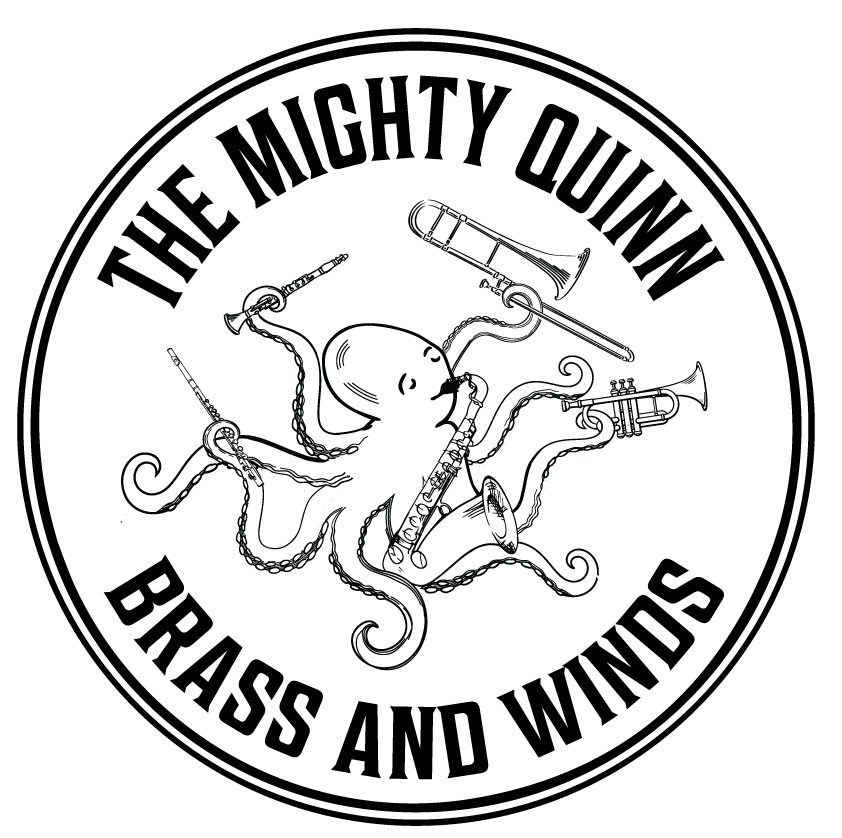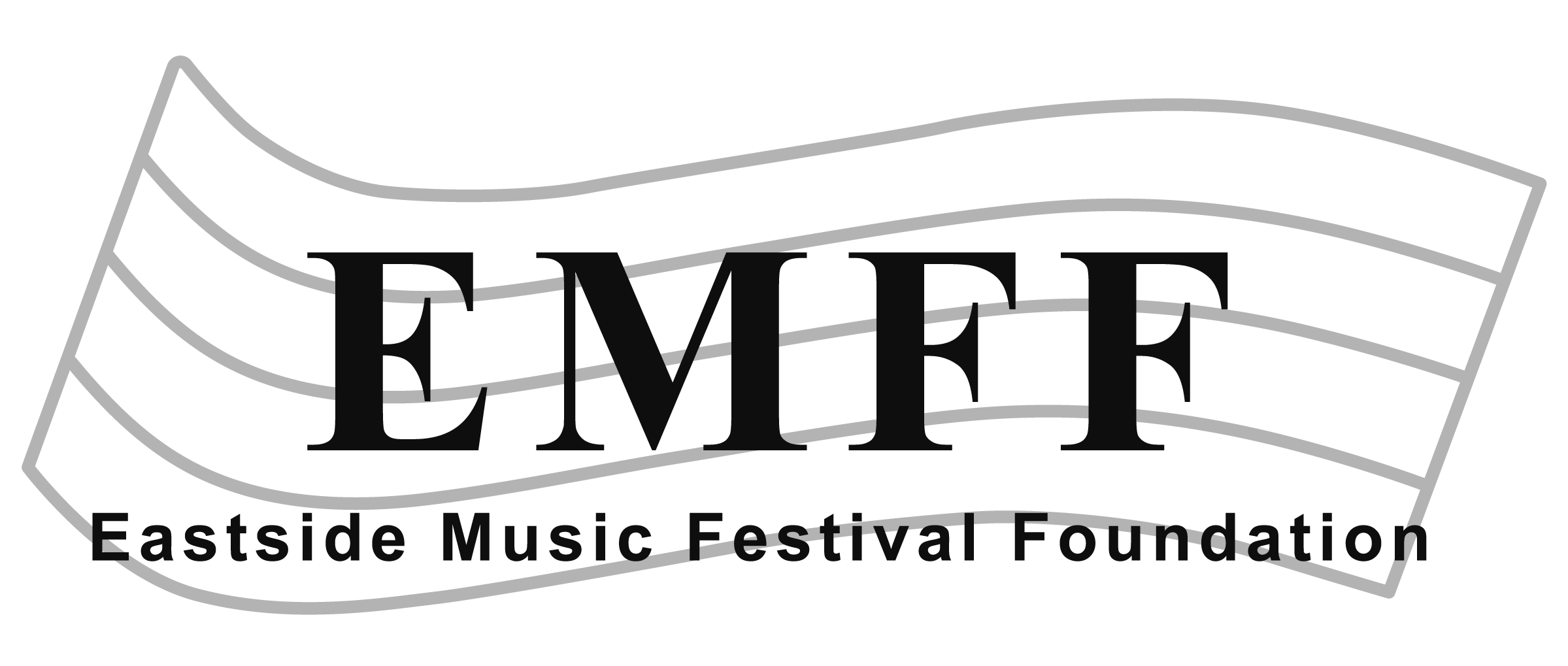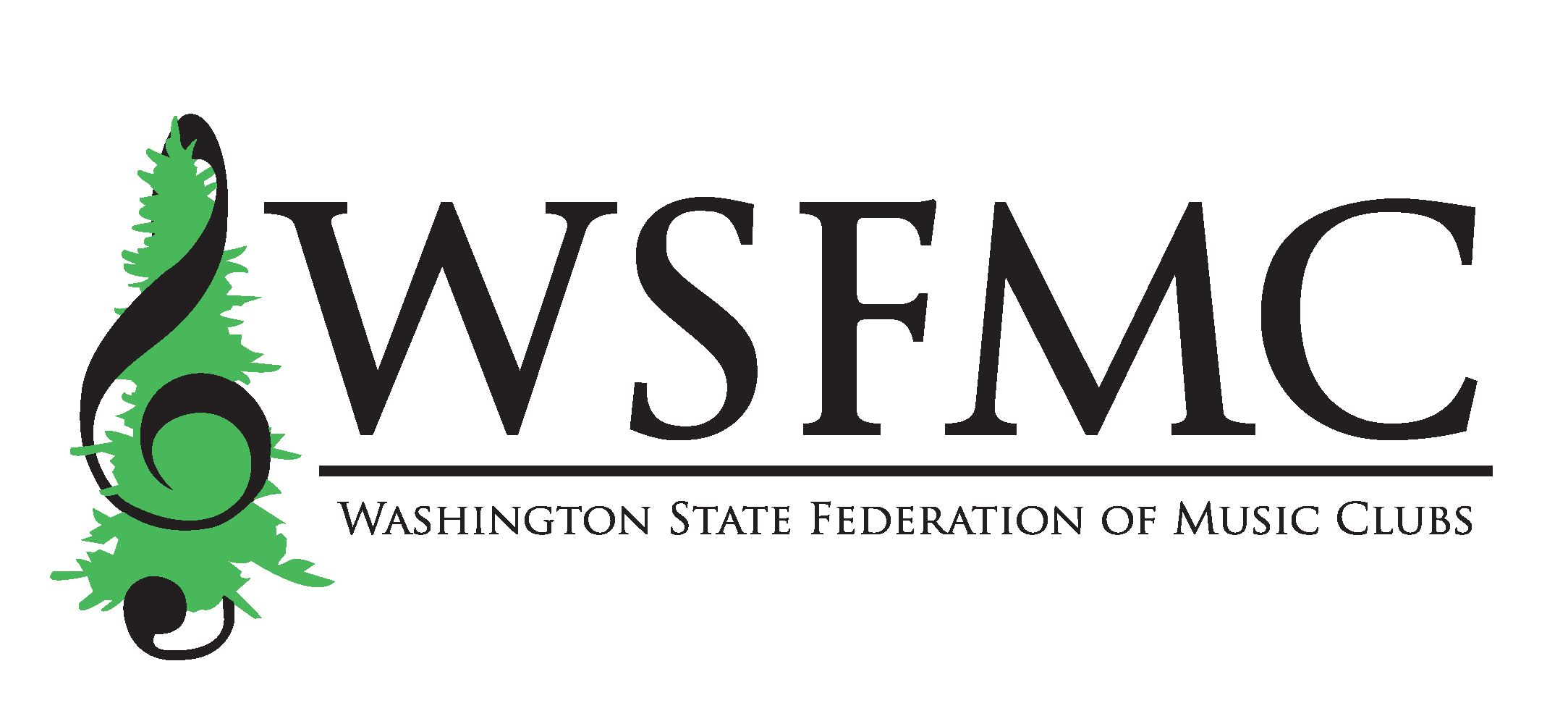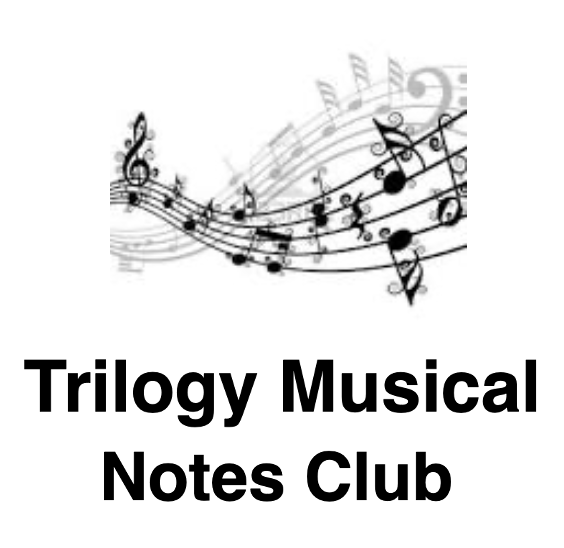Click on your instrument below and select the most advanced level of audition material that you feel comfortable with and can play well. Aim for the suggested metronome markings when indicated, but remember that it is always more important to play accurately, demonstrating good tone and intonation.
There is no option on the registration form to select the ensemble for which a student wants to audition. Adjudicators will know which ensemble a student has selected by the music they perform in their audition.
All auditioning musicians will be asked to sight-read a short excerpt of symphonic music. Music for sight-reading will be provided by the adjudicators at the audition.
Keep in mind that preparing material for a certain level does not ensure placement at that level. Your placement will be based on your demonstration of these standards at the audition. Your age is NOT a primary consideration.
Note: the sight-reading requirement still applies to online audition submissions.
The information below is updated for the 2025-26 Season.
Please contact us at auditions@byso.org with any questions.
Violin
Cadet String Orchestra – Entry level
Ability to read music in first position and knowledge of basic rhythms.
- Scales
- One octave ascending and descending D Major scale in half notes at quarter note = 120, demonstrating accurate tempo, bow control, and resonant tone.
- Two octave ascending and descending G major scale in quarter notes at quarter note = 120, demonstrating accurate tempo and correct finger patterns.
- Solo: Short solo piece that best shows your technique and musicality.
- Auditionees should select a solo piece that demonstrates the following skills and concepts: (1) basic technique including left hand and right hand shape; (2) ability to perform accurate notes and rhythms in a reasonable tempo (moderato – allegro), and produce a resonant tone.
- Sight-reading: You will be asked to sight read.
Intermezzo String Orchestra – Intermediate entry level
Generally 1-3 years of orchestra or private instruction. Ability to read music and introductory knowledge of 3rd position, especially in 1st violin. Introductory knowledge of various finger patterns and extensions.
- Scales
- Two octave ascending and descending D Major scale in one octave in half notes at quarter note = 110, demonstrating accurate tempo, bow control, and resonant tone.
- Two octave ascending and descending G major scale in quarter notes at quarter note = 110, demonstrating accurate tempo and correct finger patterns.
- Solo: Short solo piece that best shows your technique and musicality.
- Auditionees should select a solo piece that demonstrates the following skills and concepts: (1) technique including left hand and right hand shape, highlighting one or more skill level requirements for this ensemble (noted here: 3rd position, various finger patterns and extensions); (2) ability to perform accurate notes and rhythms in a reasonable tempo (moderato – allegro), (3) and produce a resonant tone
- Sight-reading: You will be asked to sight read.
Debut String Orchestra – Advanced entry level
Generally 2-3 years of orchestra or private instruction. Secure knowledge of first and third position, especially for first violins. Secure knowledge of various finger patterns and extensions.
- Scales
- Two octave ascending and descending B flat Major scale in quarter notes at quarter note = 86 bpm
- Two octave ascending and descending additional scale of choice in eighth notes at quarter note = 86 bpm
- Solo: Short solo piece that best shows your technique and musicality that highlights one or more skill level requirements for this ensemble (noted here: 3rd position, various finger patterns and extensions).
- Sight-reading: You will be asked to sight read.
Overture Ensemble – Entry Level Intermediate
- Scales: Should be memorized, played ascending and descending, and played in eighth notes at a tempo of quarter note = 80-110 beats per minute:
- One Major Scale of your choice, in three octaves
- One Melodic Minor Scale of your choice, in three octaves
- Excerpts: Track 2 and Track 3 from WMEA Junior All State Materials.
- Track 2: Dance Etude
- Track 3: Song Etude
- Solo: Short solo piece that best shows your technique and musicality.
- There will only be time for adjudicators to listen to 1-2 minutes of music, so make sure you choose a section that best represents the widest range of your ability!
- Sight-reading: You will be asked to sight read.
Premiere Orchestra – Intermediate
Secure knowledge of third position and introductory knowledge of fifth position.
- Scales: Should be memorized, played ascending and descending, and played in eighth notes at a tempo of quarter note = 80-110 beats per minute.
- One Major Scale of your choice, in three octaves
- One Melodic Minor Scale of your choice, in three octaves
- Excerpts: Track 2 (Dance Etude) and Track 3 (Song Etude) from WMEA Junior All-State Materials.
- Solo: Short solo piece that best shows your technique and musicality.
- There will only be time for adjudicators to listen to 1-2 minutes of music, so make sure you choose a section that best represents the widest range of your ability!
- Sight-reading: You will be asked to sight read.
Sinfonia – Advanced intermediate
Secure knowledge of third and fifth positions, introductory knowledge of second position, fourth position, and some higher positions.
- Scales: One three-octave major scale and one three-octave minor scale (one playing separate quarter notes with quarter note = 60, one playing 16th notes 8 per bow with quarter note = 80). Play scales ascending and descending.
- Excerpts: Required etude: Mazas #4, first four lines with quarter note = 100.
- Solo: Short solo piece that best shows your technique and musicality.
- There will only be time for adjudicators to listen to 1-2 minutes of music, so make sure you choose a section that best represents the widest range of your ability!
- Sight-reading: You will be asked to sight read.
Philharmonia – Advanced technical abilities
- Scales: One three-octave major scale and one three-octave minor scale (one slow legato scale playing quarter notes detache at a tempo of quarter note = 60 beats per minute, and one playing 16th notes with 8 notes slurred at a tempo of quarter note = 92 beats per minute). Scales should be ascending and descending.
- Excerpt: Track 4 from NafME All-Northwest String Audition Materials:
Solo: Short solo piece that best shows your technique and musicality. There will only be time for adjudicators to listen to 1-2 minutes of music, so make sure you choose a section that best represents the widest range of your ability.
Sight-reading: You will be asked to sight read.
Youth Symphony – Advanced musicianship
- Scales: One three-octave major scale and one three-octave minor scale (one slow legato scale playing quarter notes detache where the tempo is quarter note = 60, and one playing 16th notes with 8 notes slurred where the tempo is quarter note = 108). Scales should be ascending and descending, from memory.
- Excerpts: Track 3 and Track 4 from WMEA Materials:
- Track 3: Symphony No. 1, Mvmt. 2, Johannes Brahms
- Track 4: Midsummer Night’s Dream, Scherzo, Felix Mendelssohn
- Solo: Short solo piece that best shows your technique and musicality.
- There will only be time for adjudicators to listen to 1-2 minutes of music, so make sure you choose a section that best represents the widest range of your ability!
- Sight-reading: You will be asked to sight read.
Viola
Cadet String Orchestra – Entry level
Ability to read music in first position and knowledge of basic rhythms.
- Scales
- One octave ascending and descending G Major scale in half notes at quarter note = 120, demonstrating accurate tempo, bow control, and resonant tone.
- Two octave ascending and descending C major scale in quarter notes at quarter note = 120, demonstrating accurate tempo and correct finger patterns.
- Solo: Short solo piece that best shows your technique and musicality.
- Auditionees should select a solo piece that demonstrates the following skills and concepts: (1) basic technique including left hand and right hand shape; (2) ability to perform accurate notes and rhythms in a reasonable tempo (moderato – allegro), and produce a resonant tone.
- Sight-reading: You will be asked to sight read.
Intermezzo String Orchestra – Intermediate entry level
Generally 1-3 years of orchestra or private instruction. Ability to read music and introductory knowledge of 3rd position. Introductory knowledge of various finger patterns and extensions.
- Scales
- Two octave ascending and descending G Major scale in one octave in half notes at quarter note = 110, demonstrating accurate tempo and correct finger patterns.
- Two octave ascending and descending C major scale in quarter notes at quarter note = 110, demonstrating accurate tempo, bow control, and resonant tone.
- Solo: Short solo piece that best shows your technique and musicality.
- Auditionees should select a solo piece that demonstrates the following skills and concepts: (1) technique including left hand and right hand shape, highlighting one or more skill level requirements for this ensemble (noted here: various finger patterns/extensions); (2) ability to perform accurate notes and rhythms in a reasonable tempo (moderato – allegro), (3) and produce a resonant tone
- Sight-reading: You will be asked to sight read.
Debut String Orchestra – Advanced entry level
Generally, 2-3 years of orchestra or private instruction. Secure knowledge of first and third position. Secure knowledge of various finger patterns and extensions.
- Scales
- Two octave ascending and descending F Major scale in quarter notes at quarter note = 86 bpm
- Two octave ascending and descending scale of choice eighth notes at quarter note = 86 bpm
- Solo: Short solo piece that best shows your technique and musicality that highlights one or more skill level requirements for this ensemble (noted here: 3rd position, various finger patterns and extensions).
- Sight-reading: You will be asked to sight read.
Overture Ensemble – Entry Level Intermediate
- Scales: Should be memorized, played ascending and descending, and played in eighth notes at a tempo of quarter note = 80-110 beats per minute:
- One Major Scale of your choice, in three octaves
- One Melodic Minor Scale of your choice, in three octaves
- Excerpts: Track 2 and Track 3 from WMEA Junior All-State Materials.
- Track 2: Dance Etude
- Track 3: Song Etude
- Solo: Short solo piece that best shows your technique and musicality.
- There will only be time for adjudicators to listen to 1-2 minutes of music, so make sure you choose a section that best represents the widest range of your ability!
- Sight-reading: You will be asked to sight read.
Premiere Orchestra – Intermediate
Secure knowledge of third position and introductory knowledge of fifth position.
- Scales: Should be memorized, played ascending and descending, and played in eighth notes at a tempo of quarter note = 80-110 beats per minute:
- One Major Scale of your choice, in three octaves
- One Melodic Minor Scale of your choice, in three octaves
- Excerpts: Track 2 and Track 3 from WMEA Junior All State Materials:
- Track 2: Dance Etude
- Track 3: Song Etude
- Solo: Short solo piece that best shows your technique and musicality.
- There will only be time for adjudicators to listen to 1-2 minutes of music, so make sure you choose a section that best represents the widest range of your ability!
- Sight-reading: You will be asked to sight read.
Sinfonia – Advanced intermediate
Secure knowledge of third and fifth positions, introductory knowledge of second position, fourth position, and some higher positions.
- Scales: One three-octave major scale and one three-octave minor scale (one playing separate quarter notes with quarter note = 60, one playing 16th notes 8 per bow with quarter note = 80). Play scales ascending and descending.
- Excerpts: Required etude: Mazas #4, first six lines with quarter note = 100.
- Solo: Short solo piece that best shows your technique and musicality.
- There will only be time for adjudicators to listen to 1-2 minutes of music, so make sure you choose a section that best represents the widest range of your ability!
- Sight-reading: You will be asked to sight read.
Philharmonia – Advanced technical abilities
- Scales: One three-octave major scale and one three-octave minor scale (one slow legato scale playing quarter notes detache at a tempo of quarter note = 60 beats per minute, and one playing 16th notes with 8 notes slurred at a tempo of quarter note = 92 beats per minute). Scales should be ascending and descending.
- Excerpt: Track 3 from NafME All-Northwest String Audition Materials:
- Solo: Short solo piece that best shows your technique and musicality. There will only be time for adjudicators to listen to 1-2 minutes of music, so make sure you choose a section that best represents the widest range of your ability.
- Sight-reading: You will be asked to sight read..
Youth Symphony – Advanced musicianship
- Scales: One three-octave major scale and one three-octave minor scale (one slow legato scale playing quarter notes detache where the tempo is quarter note = 60, and one playing 16th notes with 8 notes slurred where the tempo is quarter note = 108). Scales should be ascending and descending, from memory.
- Excerpts: Track 3 and Track 4 from WMEA Materials:
- Track 3: Variations on a Theme by Haydn, Variation V, Johannes Brahms
- Track 4: Roman Carnival Overture, Hector Berlioz
- Solo: Short solo piece that best shows your technique and musicality.
- There will only be time for adjudicators to listen to 1-2 minutes of music, so make sure you choose a section that best represents the widest range of your ability!
- Sight-reading: You will be asked to sight read.
Cello
Cadet String Orchestra – Entry level
Ability to read music in first position and knowledge of basic rhythms.
- Scales
- One octave ascending and descending G Major scale in half notes at quarter note = 120, demonstrating accurate tempo, bow control, and resonant tone.
- Two octave ascending and descending C major scale in quarter notes at quarter note = 120, demonstrating accurate tempo and correct finger patterns.
- Solo: Short solo piece that best shows your technique and musicality.
- Auditionees should select a solo piece that demonstrates the following skills and concepts: (1) basic technique including left hand and right hand shape; (2) ability to perform accurate notes and rhythms in a reasonable tempo (moderato – allegro), and produce a resonant tone.
- Sight-reading: You will be asked to sight read.
Intermezzo String Orchestra – Intermediate entry level
Generally 1-3 years of orchestra or private instruction. Ability to read music and introductory knowledge of 2nd and 4th positions. Introductory knowledge of various finger patterns and extensions.
- Scales
- Two octave ascending and descending G Major scale in half notes at quarter note = 110, demonstrating accurate tempo, bow control, and resonant tone and correct finger pattern
- Two octave ascending and descending C major scale in quarter notes at quarter note = 110, demonstrating accurate tempo and correct finger patterns.
- Solo: Short solo piece that best shows your technique and musicality.
- Auditionees should select a solo piece that demonstrates the following skills and concepts: (1) technique including left hand and right hand shape, highlighting one or more skill level requirements for this ensemble (noted here: 2nd and 4th position, various finger patterns, and extensions); (2) ability to perform accurate notes and rhythms in a reasonable tempo (moderato – allegro), (3) and produce a resonant tone
- Sight-reading: You will be asked to sight read.
Debut String Orchestra – Advanced entry level
Generally 2-3 years of school or private instruction. Secure knowledge of first position, which includes forward extensions, backward extensions, and various finger patterns. Secure knowledge of second through fourth positions.
- Scales
- Two octave ascending and descending F Major scale in quarter notes at quarter note = 86 bpm
- Two octave ascending and descending scale of choice eighth notes at quarter note = 86 bpm
- Solo: Short solo piece that best shows your technique and musicality that highlights one or more skill level requirements for this ensemble (noted here: 2nd and 4th position, various finger patterns and extensions).
- Sight-reading: You will be asked to sight read.
Overture Ensemble – Entry Level Intermediate
- Scales: Should be memorized, played ascending and descending, and played in eighth notes at a tempo of quarter note = 80-110 beats per minute:
- One Major Scale of your choice, in three octaves
- One Melodic Minor Scale of your choice, in three octaves
- Excerpts: Track 2 and Track 3 from WMEA Junior All State Materials:
- Track 2: Dance Etude
- Track 3: Song Etude
- Solo: Short solo piece that best shows your technique and musicality.
- There will only be time for adjudicators to listen to 1-2 minutes of music, so make sure you choose a section that best represents the widest range of your ability!
- Sight-reading: You will be asked to sight read.
Premiere Orchestra – Intermediate
Secure knowledge of first through fourth positions, introductory knowledge of higher positions.
- Scales: Should be memorized, played ascending and descending, and played in eighth notes at a tempo of quarter note = 80-110 beats per minute:
- One Major Scale of your choice, in three octaves
- One Melodic Minor Scale of your choice, in three octaves
- Excerpts: Track 2 and Track 3 from WMEA Junior All State Materials:
- Track 2: Dance Etude
- Track 3: Song Etude
- Solo: Short solo piece that best shows your technique and musicality.
- There will only be time for adjudicators to listen to 1-2 minutes of music, so make sure you choose a section that best represents the widest range of your ability!
- Sight-reading: You will be asked to sight read.
Sinfonia – Advanced intermediate
- Scales: One three-octave major scale and one three-octave minor scale, one scale having three or more sharps or flats, (one playing separate quarter notes with quarter note = 60, one playing 16th notes 8 per bow with quarter note = 80). Play scales ascending and descending.
- Excerpts: Required etude: Kummer #38, play top part. Suggested metronome marking: eighth note = 80-88.
- Solo: Short solo piece that best shows your technique and musicality.
- There will only be time for adjudicators to listen to 1-2 minutes of music, so make sure you choose a section that best represents the widest range of your ability!
- Sight-reading: You will be asked to sight read.
Philharmonia – Advanced technical abilities
- Scales: One three-octave major scale and one three-octave minor scale (one slow legato scale playing quarter notes detache at a tempo of quarter note = 60 beats per minute, and one playing 16th notes with 8 notes slurred at a tempo of quarter note = 72 beats per minute). Scales should be ascending and descending.
- Excerpts: Track 4 from NafME All-Northwest String Audition Materials:
- Track 4: Midsummer Night’s Dream, Scherzo, Felix Mendelssohn AND
- Kummer #70 (Instructions for Kummer: play top part. Suggested metronome marking, quarter note=72).
- Solo: Short solo piece that best shows your technique and musicality. There will only be time for adjudicators to listen to 1-2 minutes of music, so make sure you choose a section that best represents the widest range of your ability.
- Sight-reading: You will be asked to sight read.
Youth Symphony – Advanced musicianship
- Scales: One three-octave major scale and one three-octave minor scale (one playing quarter notes detache where the tempo is quarter note = 60, and one playing 16th notes with 8 notes slurred where the tempo is quarter note = 88). Scales should be ascending and descending, from memory.
- Excerpts: Track 3 and Track 4 from WMEA Materials:
- Track 3: Piano Concerto No. 2, Mvmt. 3, Johannes Brahms
- Track 4: Midsummer Night’s Dream, Scherzo, Felix Mendelssohn
- Solo: Short solo piece that best shows your technique and musicality.
- There will only be time for adjudicators to listen to 1-2 minutes of music, so make sure you choose a section that best represents the widest range of your ability!
- Sight-reading: You will be asked to sight read.
Double Bass
Cadet String Orchestra – Entry level
Ability to read music in first position and knowledge of basic rhythms.
- Scales: One octave ascending and descending D Major scale in half notes at quarter note = 120, demonstrating accurate tempo, bow control, and resonant tone.
- Solo: Short solo piece that best shows your technique and musicality.
- Auditionees should select a solo piece that demonstrates the following skills and concepts: (1) basic technique including left hand and right hand shape; (2) ability to perform accurate notes and rhythms in a reasonable tempo (moderato – allegro), and produce a resonant tone
- Sight-reading: You will be asked to sight read.
Intermezzo String Orchestra – Intermediate entry level
Generally 1-3 years of orchestra or private instruction. Ability to read music and introductory knowledge of positions, forward/backward extensions, and finger patterns.
- Scales
- One octave ascending and descending D Major scale in half notes at quarter note = 110, demonstrating accurate tempo, bow control, and resonant tone.
- One octave ascending and descending scale in half notes at quarter note = 110, demonstrating accurate tempo, bow control, and resonant tone.
- Solo: Short solo piece that best shows your technique and musicality.
- Auditionees should select a solo piece that demonstrates the following skills and concepts: (1) technique including left hand and right hand shape, highlighting one or more skill level requirements for this ensemble (noted here: position work, various finger patterns, and extensions); (2) ability to perform accurate notes and rhythms in a reasonable tempo (moderato – allegro), (3) and produce a resonant tone.
- Sight-reading: You will be asked to sight read.
Debut String Orchestra – Advanced entry level
Generally one to two years in school orchestra or private instruction.
- Scales
- G Major scale in quarter notes at quarter note = 86 bpm
- One additional scale in eighth notes at quarter note = 86 bpm
- Solo: Short solo piece that best shows your technique and musicality that highlights one or more skill level requirements for this ensemble (noted here: position work, various finger patterns/extensions).
- Sight-reading: You will be asked to sight read.
Overture Ensemble – Entry Level Intermediate
- Scales: Should be memorized, played ascending and descending, and played in eighth notes at a tempo of quarter note = 80-110 beats per minute:
- One Major Scale of your choice, in two octaves
- One Melodic Minor Scale of your choice, in one octaves
- Excerpts: Track 2 and Track 3 from WMEA Junior All State Materials:
- Track 2: Dance Etude
- Track 3: Song Etude
- Solo: Short solo piece that best shows your technique and musicality.
- There will only be time for adjudicators to listen to 1-2 minutes of music, so make sure you choose a section that best represents the widest range of your ability!
- Sight-reading: You will be asked to sight read.
Premiere Orchestra – Intermediate
Solid knowledge of sharps and flats.
- Scales: Should be memorized, played ascending and descending, and played in eighth notes at a tempo of quarter note = 80-110 beats per minute:
- One Major Scale of your choice, in two octaves
- One Melodic Minor Scale of your choice, in one octave
- Excerpts: Track 2 and Track 3 from WMEA Junior All State Materials:
- Track 2: Dance Etude
- Track 3: Song Etude
- Solo: Short solo piece that best shows your technique and musicality.
- There will only be time for adjudicators to listen to 1-2 minutes of music, so make sure you choose a section that best represents the widest range of your ability!
- Sight-reading: You will be asked to sight read.
Sinfonia – Advanced intermediate
Advanced intermediate.
- Scales: F Major scale in two octaves and one minor scale in one octave, ascending and descending. (one playing separate quarter notes with quarter note = 60, one playing 8th notes 4 per bow with quarter note = 80)
- Excerpts: None
- Solo: Short solo piece that best shows your technique and musicality.
- There will only be time for adjudicators to listen to 1-2 minutes of music, so make sure you choose a section that best represents the widest range of your ability!
- Sight-reading: You will be asked to sight read.
Philharmonia – Advanced technical abilities
- Scales: One major scale in two or more octaves and one minor scale in two or more octaves (one slow legato scale playing quarter notes detache at a tempo of quarter note = 60 beats per minute, and one playing 16th notes with 8 notes slurred at a tempo of quarter note = 72 beats per minute). Scales should be ascending and descending.
- Solo: Short solo piece that best shows your technique and musicality. There will only be time for adjudicators to listen to 1-2 minutes of music, so make sure you choose a section that best represents the widest range of your ability.
- Sight-reading: You will be asked to sight read.
Youth Symphony – Advanced musicianship
- Scales: One major scale in two or more octaves and one minor scale in two or more octaves (one playing quarter notes detache where the tempo is quarter note = 60, and one playing 16th notes with 8 notes slurred where the tempo is quarter note = 88). Scales should be ascending and descending, from memory.
- Excerpts: Track 3 and Track 4 from WMEA Materials:
- Track 3: Symphony No. 39, Mvmt. 1, Wolfgang Amadeus Mozart
- Track 4: Symphony No. 7, Mvmt. 1, Ludwig van Beethoven
- Solo: Short solo piece that best shows your technique and musicality.
- There will only be time for adjudicators to listen to 1-2 minutes of music, so make sure you choose a section that best represents the widest range of your ability!
- Sight-reading: You will be asked to sight read.
Flute
Premiere Orchestra / Overture Ensemble
- Scales: Should be memorized, played ascending and descending, and played in eighth notes at a tempo of quarter note = 80-110 beats per minute:
- One Major Scale of your choice, in two octaves – tongued
- One Minor Scale of your choice, in two octaves – slurred
- A Chromatic scale, demonstrating your fullest controlled range possible, preferably 3 octaves (or at least from the lowest D on the flute through the 3rd octave Bb)
- Etudes: Track 3 and Track 4 from WMEA Junior All-State Auditions
- Sight-Reading: You will be asked to sight read.
Sinfonia / Flute Choir
- Scales: Should be memorized, played ascending and descending, and played in eighth notes at a tempo of quarter note = 90-120 beats per minute:
- One Major Scale of your choice, in two octaves – tongued
- One Minor Scale of your choice, in two octaves – slurred
- A Chromatic scale, demonstrating your fullest controlled range possible, preferably 3 octaves (or at least from the lowest D on the flute through the 3rd octave Bb)
- Etudes: Prepare the “Dance Etude”, “Song Etude” and “Rhythmic Etude” (tracks 2, 3, and 4) from the WMEA Junior All-State Band 2026 Audition Materials.
- Solo: Prepare a one-minute excerpt from your solo literature that best shows your artistry, technique, and musical skills. Repertoire might include Sonatas by Handel or Telemann, or be selected from the National Flute Association’s Intermediate Solo Repertoire Guide.
- Sight-Reading: You will be asked to sight read.
Philharmonia / Flute Orchestra/ Youth Symphony
- Scales: Should be memorized, played ascending and descending, and played in sixteenth notes at a tempo of quarter note = 72-80 beats per minute:
- One Major Scale of your choice, in two octaves – tongued
- One Minor Scale of your choice, in two octaves – slurred
- A Chromatic scale using WMEA HS Wind and Percussion audition track 1 as a model (use link below).
- Required Etudes: Tracks 2, 3, and 4 from WMEA 2026 Audition Materials.*
- Track 2: Joachim Andersen, 24 Etudes for Flute, Op. 15, No. 24
- Track 3: Symphony No. 4 in E Minor, Op. 94, Mvmt. 4, Johannes Brahm
- Track 4: Flute Sonata in Eb Major, BWV 1031, Mvmt. 3, Johann Sebastian Bach
- *Flutists who would like to audition on piccolo and have their own piccolo should also prepare the Piccolo excerpt (Track 5) from WMEA Audition Materials:
- Track 5: Molly on the Shore, Percy Grainger
- Solo: Prepare a one- to two-minute excerpt from your solo literature that best shows your artistry, technique, and musical skills. Repertoire may be selected from the standards of the French Conservatory; the National Flute Association Repertoire guide system: Levels G – J, (found on NFA website in the member’s only section or www.leonardgarrison.com/applied-repertoire); or the RCM (Royal Conservatory of Music) Level 7 (or higher); or ABRSM Grade 6 (or higher)
- Sight-reading: You will be asked to sight read.
Oboe
Overture Ensemble
- Scales: Should be memorized, played ascending and descending, and played in eighth notes at a tempo of quarter note = 80 beats per minute:
- One Major Scale of your choice, in two octaves – tongue
- One Minor Scale of your choice, in one octave – slurred
- A Chromatic scale, demonstrating your fullest controlled range possible, of at least one octave
- Excerpts: Tracks 2 and 3 from WMEA 2026 Audition Materials.
- Track 2: Dance Etude
- Track 3: Song Etude
- Solo: Short solo piece that best shows your technique and musicality.
- There will only be time for adjudicators to listen to 1-2 minutes of music, so make sure you choose a section that best represents the widest range of your ability!
- Sight-reading: You will be asked to sight read.
Premiere Orchestra
- Scales: Should be memorized, played ascending and descending, and played in eighth notes at a tempo of quarter note = 80 beats per minute:
- One Major Scale of your choice, in two octaves – tongue
- One Minor Scale of your choice, in one octave – slurred
- A Chromatic scale, demonstrating your fullest controlled range possible, of at least one octave
- Excerpts: Tracks 2 and 3 from WMEA 2026 Audition Materials.
- Track 2: Dance Etude
- Track 3: Song Etude
- Solo: Short solo piece that best shows your technique and musicality.
- There will only be time for adjudicators to listen to 1-2 minutes of music, so make sure you choose a section that best represents the widest range of your ability!
- Sight-reading: You will be asked to sight read.
Sinfonia
- Scales: Should be memorized, played ascending and descending, and played in eighth notes at a tempo of quarter note = 108 beats per minute:
- One Major Scale of your choice, in two octaves – tongued
- One Minor Scale of your choice, in two octaves – slurred
- A Chromatic scale, demonstrating your fullest controlled range possible, of at least two octaves
- Excerpts: Tracks 2, 3, and 4 from WMEA 2026 Audition Materials.
- Track 2: Dance Etude
- Track 3: Song Etude
- Track 4: Rhythmic Etude
- Solo: Short solo piece that best shows your technique and musicality.
- There will only be time for adjudicators to listen to 1-2 minutes of music, so make sure you choose a section that best represents the widest range of your ability!
- Sight-reading: You will be asked to sight read.
Philharmonia
- Scales: Should be memorized, played ascending and descending, and played in sixteenth notes at a tempo of quarter note = 72 beats per minute:
- One Major Scale of your choice, in two octaves – tongued
- One Minor Scale of your choice, in two octaves – slurred.
- A Chromatic scale, demonstrating your fullest controlled range possible, of at least two octaves.
- Excerpt: Tracks 3 from WMEA 2026 Audition Materials.
- Track 3: Aria: Ich will bei meinem Jesu wachen, Johann Sebastian Bach
- Solo: Short solo piece that best shows your technique and musicality. There will only be time for adjudicators to listen to 1-2 minutes of music, so make sure you choose a section that best represents the widest range of your ability.
- Sight-reading: You will be asked to sight read.
Youth Symphony
- Scales: Should be memorized, played ascending and descending, and played in sixteenth notes at a tempo of quarter note = 72 beats per minute:
- One Major Scale of your choice, in two octaves – tongued
- One Minor Scale of your choice, in two octaves – slurred.
- A Chromatic scale, demonstrating your fullest controlled range possible, of at least two octaves.
- Excerpts: Tracks 3 and 4 from WMEA 2026 Audition Materials.
- Track 3: Aria: Ich will bei meinem Jesu wachen, Johann Sebastian Bach
- Track 4: Sonata for Oboe in D Major, Op. 166, Mvmt. II, Camille Saint-Saëns
- Solo: Short solo piece that best shows your technique and musicality.
- There will only be time for adjudicators to listen to 1-2 minutes of music, so make sure you choose a section that best represents the widest range of your ability!
- Sight-reading: You will be asked to sight read.
Clarinet & Bass Clarinet
Overture Ensemble
- Scales: Should be memorized, played ascending and descending, and played in eighth notes at a tempo of quarter note = 80-110 beats per minute:
- One Major Scale of your choice, in two octaves – tongued
- One Minor Scale of your choice, in two octaves – slurred
- A Chromatic scale, demonstrating your fullest controlled range possible, preferably 3 octaves.
- Excerpts: Tracks 2 and 3 from WMEA 2026 Audition Materials
- Track 2: Dance Etude
- Track 3: Song Etude
- Solo: Short solo piece that best shows your technique and musicality.
- There will only be time for adjudicators to listen to 1-2 minutes of music, so make sure you choose a section that best represents the widest range of your ability!
- Sight-reading: You will be asked to sight read.
Premiere Orchestra
- Scales: Should be memorized, played ascending and descending, and played in eighth notes at a tempo of quarter note = 80-110 beats per minute:
- One Major Scale of your choice, in two octaves – tongued
- One Minor Scale of your choice, in two octaves – slurred
- A Chromatic scale, demonstrating your fullest controlled range possible, preferably 3 octaves (or at least from the lowest D on the flute through the 3rd octave Bb)
- Excerpts: Tracks 2 and 3 from WMEA 2026 Audition Materials.
- Track 2: Dance Etude
- Track 3: Song Etude
- Solo: Short solo piece that best shows your technique and musicality.
- There will only be time for adjudicators to listen to 1-2 minutes of music, so make sure you choose a section that best represents the widest range of your ability!
- Sight-reading: You will be asked to sight read.
Sinfonia
- Scales: Should be memorized, played ascending and descending, and played in eighth notes at a tempo of quarter note = 108 beats per minute:
- One Major Scale of your choice, in two octaves – tongued
- One Minor Scale of your choice, in two octaves – slurred
- A Chromatic scale, demonstrating your fullest controlled range possible, of at least two octaves.
- Excerpts: Tracks 2, 3, and 4 from WMEA 2026 Audition Materials.
- Track 2: Dance Etude
- Track 3: Song Etude
- Track 4: Rhythmic Etude
- Solo: Short solo piece that best shows your technique and musicality.
- There will only be time for adjudicators to listen to 1-2 minutes of music, so make sure you choose a section that best represents the widest range of your ability!
- Sight-reading: You will be asked to sight read.
Philharmonia
- Scales: Should be memorized, played ascending and descending, and played in sixteenth notes at a tempo of quarter note = 72 beats per minute:
- One Major Scale of your choice, in two octaves – tongued
- One Minor Scale of your choice, in two octaves – slurred.
- A Chromatic scale, demonstrating your fullest controlled range possible, of at least two octaves.
- Excerpt: Tracks 4 from WMEA 2026 Audition Materials.*
- Track 4: Clarinette Sonate, Op. 167, Mvmt. II, Camille Saint-Saëns
- *Clarinetists who would like to audition on bass clarinet and have their own bass should also prepare the Bass clarinet excerpt (Track 2) from WMEA Audition Materials:
- Track 2: Cello Suite No. 1, Gigue, Mvmt. VII, Johann Sebastian Bach
- Clarinetists auditioning on bass clarinet will also be expected to double on B-flat clarinet if accepted into Philharmonia.
- Solo: Short solo piece that best shows your technique and musicality. There will only be time for adjudicators to listen to 1-2 minutes of music, so make sure you choose a section that best represents the widest range of your ability.
- Sight-reading: You will be asked to sight read.
Youth Symphony
- Scales: Should be memorized, played ascending and descending, and played in sixteenth notes at a tempo of quarter note = 72 beats per minute:
- One Major Scale of your choice, with 3 or more sharps or flats, in two octaves – tongued
- One Minor Scale of your choice, with 3 or more sharps or flats, in two octaves – slurred
- For a Chromatic scale, prepare WMEA 2026 Audition Materials audition track
- Excerpts: Tracks 2, 3, and 4 from WMEA 2026 Audition Materials.*
- Track 2: 40 Studies for Clarinet, No. 23, Cyrille Rose
- Track 3: Clarinet Concertino No. 1, Op. 73, Mvmt. II, Carl Maria von Weber
- Track 4: Clarinette Sonate, Op. 167, Mvmt. II, Camille Saint-Saëns
- *Clarinetists who would like to audition on bass clarinet and have their own bass should also prepare the Bass clarinet excerpt (Track 2) from WMEA Audition Materials:
- Track 2: Cello Suite No. 1, Gigue, Mvmt. VII, Johann Sebastian Bach
- Clarinetists auditioning on bass clarinet will also be expected to double on B-flat clarinet if accepted into Youth Symphony.
- Solo: Short solo piece that best shows your technique and musicality.
- There will only be time for adjudicators to listen to 1-2 minutes of music, so make sure you choose a section that best represents the widest range of your ability!
- Sight-reading: You will be asked to sight read.
Bassoon
Overture Ensemble
- Scales: Should be memorized, played ascending and descending, and played in eighth notes at a tempo of quarter note = 80 beats per minute:
- One Major Scale of your choice, in two octaves – tongued
- One Minor Scale of your choice, in one octave – slurred
- A Chromatic scale, demonstrating your fullest controlled range possible, of at least one octave.
- Excerpts: Tracks 2 and 3 from WMEA 2026 Audition Materials.
- Track 2: Dance Etude
- Track 3: Song Etude
- Solo: Short solo piece that best shows your technique and musicality.
- There will only be time for adjudicators to listen to 1-2 minutes of music, so make sure you choose a section that best represents the widest range of your ability!
- Sight-reading: You will be asked to sight read.
Premiere Orchestra
- Scales: Should be memorized, played ascending and descending, and played in eighth notes at a tempo of quarter note = 80 beats per minute:
- One Major Scale of your choice, in two octaves – tongued
- One Minor Scale of your choice, in one octave – slurred
- A Chromatic scale, demonstrating your fullest controlled range possible, of at least one octave.
- Excerpts: Tracks 2 and 3 from WMEA 2026 Audition Materials.
- Track 2: Dance Etude
- Track 3: Song Etude
- Solo: Short solo piece that best shows your technique and musicality.
- There will only be time for adjudicators to listen to 1-2 minutes of music, so make sure you choose a section that best represents the widest range of your ability!
- Sight-reading: You will be asked to sight read.
Sinfonia
- Scales: Should be memorized, played ascending and descending, and played in eighth notes at a tempo of quarter note = 108 beats per minute:
- One Major Scale of your choice, in two octaves – tongued
- One Minor Scale of your choice, in two octaves – slurred
- A Chromatic scale, demonstrating your fullest controlled range possible, of at least two octaves.
- Excerpts: Tracks 2, 3, and 4 from WMEA 2026 Audition Materials.
- Track 2: Dance Etude
- Track 3: Song Etude
- Track 4: Rhythmic Etude
- Solo: Short solo piece that best shows your technique and musicality. There will only be time for adjudicators to listen to 1-2 minutes of music, so make sure you choose a section that best represents the widest range of your ability.
- Sight-reading: You will be asked to sight read.
Philharmonia
- Scales: Should be memorized, played ascending and descending, and played in sixteenth notes at a tempo of quarter note = 72 beats per minute:
- One Major Scale of your choice, in two octaves – tongued
- One Minor Scale of your choice, in two octaves – slurred.
- A Chromatic scale, demonstrating your fullest controlled range possible, of at least two octaves.
- Solo: Short solo piece that best shows your technique and musicality.
- There will only be time for adjudicators to listen to 1-2 minutes of music, so make sure you choose a section that best represents the widest range of your ability.
- Sight-reading: You will be asked to sight read.
Youth Symphony
- Scales: Should be memorized, played ascending and descending, and played in sixteenth notes at a tempo of quarter note = 72 beats per minute:
- One Major Scale of your choice, in two octaves – tongued
- One Minor Scale of your choice, in two octaves – slurred
- For a Chromatic scale, prepare WMEA 2026 Audition Materials audition track
- Excerpts:
- Ravel, Bolero; 3rd measure after rehearsal 2 through the downbeat of 1st measure of rehearsal 3l quarter-note equals 72
- Tchaikovsky, Symphony #6; mvt 1, mm. 1-12; quarter-note equals 54
- Solo: Short solo piece that best shows your technique and musicality.
- There will only be time for adjudicators to listen to 1-2 minutes of music, so make sure you choose a section that best represents the widest range of your ability!
- Sight-reading: You will be asked to sight read.
Bassoonists auditioning for Youth Symphony will be expected to be fluent in reading tenor clef.
Horn
Overture Ensemble
- Scales: Should be memorized, played ascending and descending, and played in eighth notes at a tempo of quarter note = 80 beats per minute:
- One Major Scale of your choice, in one octave – tongued.
- One Minor Scale of your choice, in one octave – slurred.
- A Chromatic scale of at least one octave, demonstrating your fullest controlled range possible.
- Excerpts: Tracks 2, and 3 from WMEA 2026 Audition Materials.
- Track 2: Dance Etude
- Track 3: Song Etude
- Solo: Short solo piece that best shows your technique and musicality.
- There will only be time for adjudicators to listen to 1-2 minutes of music, so make sure you choose a section that best represents the widest range of your ability!
- Sight-reading: You will be asked to sight read.
Premiere Orchestra
- Scales: Should be memorized, played ascending and descending, and played in eighth notes at a tempo of quarter note = 80 beats per minute:
- One Major Scale of your choice, in one octave – tongued.
- One Minor Scale of your choice, in one octave – slurred.
- A Chromatic scale of at least one octave, demonstrating your fullest controlled range possible.
- Excerpts: Tracks 2, and 3 from WMEA 2026 Audition Materials.
- Track 2: Dance Etude
- Track 3: Song Etude
- Solo: Short solo piece that best shows your technique and musicality.
- There will only be time for adjudicators to listen to 1-2 minutes of music, so make sure you choose a section that best represents the widest range of your ability!
- Sight-reading: You will be asked to sight read.
Sinfonia
- Scales: Should be memorized, played ascending and descending, and played in eighth notes at a tempo of quarter note = 108 beats per minute:
- One Major Scale of your choice, in two octaves – tongued.
- One Minor Scale of your choice, in two octaves – slurred.
- A Chromatic scale of at least two octaves, demonstrating your fullest controlled range possible.
- Excerpts: Tracks 2, 3, and 4 from WMEA 2026 Audition Materials.
- Track 2: Dance Etude
- Track 3: Song Etude
- Track 4: Rhythmic Etude
- Solo: Short solo piece that best shows your technique and musicality.
- There will only be time for adjudicators to listen to 1-2 minutes of music, so make sure you choose a section that best represents the widest range of your ability!
- Sight-reading: You will be asked to sight read.
Philharmonia
- Scales: Should be memorized, played ascending and descending, and played in sixteenth notes at a tempo of quarter note = 72 beats per minute:
- One Major Scale of your choice, in two octaves – tongued
- One Minor Scale of your choice, in two octaves – slurred.
- A Chromatic scale, demonstrating your fullest controlled range possible, of at least two octaves.
- Solo: Short solo piece that best shows your technique and musicality. There will only be time for adjudicators to listen to 1-2 minutes of music, so make sure you choose a section that best represents the widest range of your ability.
- Sight-reading: You will be asked to sight read.
Youth Symphony
- Scales: Should be memorized, played ascending and descending, and played in sixteenth notes at a tempo of quarter note = 72 beats per minute:
- One Major Scale of your choice, in two octaves – tongued.
- One Minor Scale of your choice, in two octaves – slurred.
- A Chromatic scale of at least two octaves, demonstrating your fullest controlled range possible.
- Excerpts: Track 3 from WMEA 2026 Audition Materials.
- Track 3: Reverie, Op. 24, mm.1-14, Alexander Glazunov
- Solo: Short solo piece that best shows your technique and musicality.
- There will only be time for adjudicators to listen to 1-2 minutes of music, so make sure you choose a section that best represents the widest range of your ability!
- Sight-reading: You will be asked to sight read.
Trumpet
Overture Ensemble
- Scales: Should be memorized, played ascending and descending, and played in eighth notes at a tempo of quarter note = 80 beats per minute:
- One Major Scale of your choice, in one octave – tongued.
- One Minor Scale of your choice, in one octave – slurred.
- A Chromatic scale of at least one octave, demonstrating your fullest controlled range possible.
- Excerpts: Tracks 2, and 3 from WMEA 2026 Audition Materials.
- Track 2: Dance Etude
- Track 3: Song Etude
- Solo: Short solo piece that best shows your technique and musicality.
- There will only be time for adjudicators to listen to 1-2 minutes of music, so make sure you choose a section that best represents the widest range of your ability!
- Sight-reading: You will be asked to sight read.
Premiere Orchestra
- Scales: Should be memorized, played ascending and descending, and played in eighth notes at a tempo of quarter note = 80 beats per minute:
- One Major Scale of your choice, in one octave – tongued.
- One Minor Scale of your choice, in one octave – slurred.
- A Chromatic scale of at least one octave, demonstrating your fullest controlled range possible.
- Excerpts: Tracks 2, and 3 from WMEA 2026 Audition Materials.
- Track 2: Dance Etude
- Track 3: Song Etude
- Solo: Short solo piece that best shows your technique and musicality.
- There will only be time for adjudicators to listen to 1-2 minutes of music, so make sure you choose a section that best represents the widest range of your ability!
- Sight-reading: You will be asked to sight read.
Sinfonia
- Scales: Should be memorized, played ascending and descending, and played in eighth notes at a tempo of quarter note = 108 beats per minute:
- One Major Scale of your choice, in two octaves – tongued.
- One Minor Scale of your choice, in two octaves – slurred.
- A Chromatic scale of at least two octaves, demonstrating your fullest controlled range possible.
- Excerpts: Tracks 2, 3, and 4 from WMEA 2026 Audition Materials.
- Track 2: Dance Etude
- Track 3: Song Etude
- Track 4: Rhythmic Etude
- Solo: Short solo piece that best shows your technique and musicality.
- There will only be time for adjudicators to listen to 1-2 minutes of music, so make sure you choose a section that best represents the widest range of your ability!
- Sight-reading: You will be asked to sight read.
Philharmonia
- Scales: Should be memorized, played ascending and descending, and played in sixteenth notes at a tempo of quarter note = 72 beats per minute:
- One Major Scale of your choice, in two octaves – tongued
- One Minor Scale of your choice, in two octaves – slurred.
- A Chromatic scale, demonstrating your fullest controlled range possible, of at least two octaves.
- Solo: Short solo piece that best shows your technique and musicality. There will only be time for adjudicators to listen to 1-2 minutes of music, so make sure you choose a section that best represents the widest range of your ability.
- Sight-reading: You will be asked to sight read.
Youth Symphony
- Scales: Should be memorized, played ascending and descending, and played in sixteenth notes at a tempo of quarter note = 72 beats per minute:
- One Major Scale of your choice, in two octaves – tongued.
- One Minor Scale of your choice, in two octaves – slurred.
- A Chromatic scale of at least two octaves, demonstrating your fullest controlled range possible.
- Excerpts: Track 4 from WMEA 2026 Audition Materials.
- Track 4: Trumpet Concerto in Eb Major, Mvmt. III, Franz Joseph Haydn
- Solo: Short solo piece that best shows your technique and musicality.
- There will only be time for adjudicators to listen to 1-2 minutes of music, so make sure you choose a section that best represents the widest range of your ability!
- Sight-reading: You will be asked to sight read.
Trombone
Overture Ensemble
- Scales: Should be memorized, played ascending and descending, and played in eighth notes at a tempo of quarter note = 80 beats per minute:
- One Major Scale of your choice, in one octave – tongued.
- One Minor Scale of your choice, in one octave – slurred.
- A Chromatic scale of at least one octave, demonstrating your fullest controlled range possible.
- Excerpts: Tracks 2, and 3 from WMEA 2026 Audition Materials.
- Track 2: Dance Etude
- Track 3: Song Etude
- Solo: Short solo piece that best shows your technique and musicality.
- There will only be time for adjudicators to listen to 1-2 minutes of music, so make sure you choose a section that best represents the widest range of your ability!
- Sight-reading: You will be asked to sight read.
Premiere Orchestra
- Scales: Should be memorized, played ascending and descending, and played in eighth notes at a tempo of quarter note = 80 beats per minute:
- One Major Scale of your choice, in one octave – tongued.
- One Minor Scale of your choice, in one octave – slurred.
- A Chromatic scale of at least one octave, demonstrating your fullest controlled range possible.
- Excerpts: Tracks 2, and 3 from WMEA 2026 Audition Materials.
- Track 2: Dance Etude
- Track 3: Song Etude
- Solo: Short solo piece that best shows your technique and musicality.
- There will only be time for adjudicators to listen to 1-2 minutes of music, so make sure you choose a section that best represents the widest range of your ability!
- Sight-reading: You will be asked to sight read.
Sinfonia
- Scales: Should be memorized, played ascending and descending, and played in eighth notes at a tempo of quarter note = 108 beats per minute:
- One Major Scale of your choice, in two octaves – tongued.
- One Minor Scale of your choice, in two octaves – slurred.
- A Chromatic scale of at least two octaves, demonstrating your fullest controlled range possible.
- Excerpts: Tracks 2, 3, and 4 from WMEA 2026 Audition Materials.
- Track 2: Dance Etude
- Track 3: Song Etude
- Track 4: Rhythmic Etude
- Solo: Short solo piece that best shows your technique and musicality.
- There will only be time for adjudicators to listen to 1-2 minutes of music, so make sure you choose a section that best represents the widest range of your ability!
- Sight-reading: You will be asked to sight read.
Philharmonia
- Scales: Should be memorized, played ascending and descending, and played in sixteenth notes at a tempo of quarter note = 72 beats per minute:
- One Major Scale of your choice, in two octaves – tongued
- One Minor Scale of your choice, in two octaves – slurred.
- A Chromatic scale, demonstrating your fullest controlled range possible, of at least two octaves.
- Solo: Short solo piece that best shows your technique and musicality. There will only be time for adjudicators to listen to 1-2 minutes of music, so make sure you choose a section that best represents the widest range of your ability.
- Sight-reading: You will be asked to sight read.
Youth Symphony
- Scales: Should be memorized, played ascending and descending, and played in sixteenth notes at a tempo of quarter note = 72 beats per minute:
- One Major Scale of your choice, in two octaves – tongued.
- One Minor Scale of your choice, in two octaves – slurred.
- A Chromatic scale of at least two octaves, demonstrating your fullest controlled range possible.
- Excerpts: Track 3 from WMEA 2026 Audition Materials.*
- Track 3: Six Sonatas for Bassoon, Sonata No. 1, Mvmt. I, Johann Ernst Galliard
- *Trombonists who would like to audition on bass trombone should also prepare the bass trombone excerpt (Track 5) from WMEA Audition Materials:
- Solo: Short solo piece that best shows your technique and musicality.
- There will only be time for adjudicators to listen to 1-2 minutes of music, so make sure you choose a section that best represents the widest range of your ability!
- Sight-reading: You will be asked to sight read.
All trombonists auditioning for Youth Symphony will be expected to be fluent in reading tenor clef.
Tuba, Euphonium or Baritone
Overture Ensemble
- Scales: Should be memorized, played ascending and descending, and played in eighth notes at a tempo of quarter note = 80 beats per minute:
- One Major Scale of your choice, in one octave – tongued.
- One Minor Scale of your choice, in one octave – slurred.
- A Chromatic scale of at least one octave, demonstrating your fullest controlled range possible.
- Excerpts: Track 3 and 4 from the 2026 WMEA Junior All-State Audition Materials.
- Solo: Short solo piece that best shows your technique and musicality.
- There will only be time for adjudicators to listen to 1-2 minutes of music, so make sure you choose a section that best represents the widest range of your ability!
- Sight-reading: You will be asked to sight read.
Premiere Orchestra
- Scales: Should be memorized, played ascending and descending, and played in eighth notes at a tempo of quarter note = 80 beats per minute:
- One Major Scale of your choice, in one octave – tongued.
- One Minor Scale of your choice, in one octave – slurred.
- A Chromatic scale of at least one octave, demonstrating your fullest controlled range possible.
- Excerpts: Tracks 2, 3, and 4 from WMEA 2026 Audition Materials.
- Track 2: Dance Etude
- Track 3: Song Etude
- Track 4: Rhythmic Etude
- Solo: Short solo piece that best shows your technique and musicality.
- There will only be time for adjudicators to listen to 1-2 minutes of music, so make sure you choose a section that best represents the widest range of your ability!
- Sight-reading: You will be asked to sight read.
Sinfonia
- Scales: Should be memorized, played ascending and descending, and played in eighth notes at a tempo of quarter note = 80 beats per minute:
- One Major Scale of your choice, in one octave – tongued.
- One Minor Scale of your choice, in one octave – slurred.
- A Chromatic scale of at least one octave, demonstrating your fullest controlled range possible.
- Excerpts: Tracks 2, 3, and 4 from WMEA 2026 Audition Materials.
- Track 2: Dance Etude
- Track 3: Song Etude
- Track 4: Rhythmic Etude
- Solo: Short solo piece that best shows your technique and musicality.
- There will only be time for adjudicators to listen to 1-2 minutes of music, so make sure you choose a section that best represents the widest range of your ability!
- Sight-reading: You will be asked to sight read.
Philharmonia
- Scales: Should be memorized, played ascending and descending, and played in sixteenth notes at a tempo of quarter note = 72 beats per minute:
- One Major Scale of your choice, in two octaves – tongued
- One Minor Scale of your choice, in two octaves – slurred.
- A Chromatic scale, demonstrating your fullest controlled range possible, of at least two octaves.
- Solo: Short solo piece that best shows your technique and musicality. There will only be time for adjudicators to listen to 1-2 minutes of music, so make sure you choose a section that best represents the widest range of your ability.
- Sight-reading: You will be asked to sight read.
Youth Symphony
- Scales: Should be memorized, played ascending and descending, and played in sixteenth notes at a tempo of quarter note = 72 beats per minute:
- One Major Scale of your choice, in two octaves – tongued.
- One Minor Scale of your choice, in two octaves – slurred.
- A Chromatic scale of at least two octaves, demonstrating your fullest controlled range possible.
- Excerpts: Track 4 (for TUBA) from WMEA 2026 Audition Materials.*
- Track 4: Wagner, Die Meistersinger
- Solo: Short solo piece that best shows your technique and musicality.
- There will only be time for adjudicators to listen to 1-2 minutes of music, so make sure you choose a section that best represents the widest range of your ability!
- Sight-reading: You will be asked to sight read.
*Euphonium students will only be admitted to Youth Symphony at the discretion of the Music Director.
Percussion
Updated as of 4/3/25.
Students who are accepted into Percussion Ensemble also perform with Youth Symphony, Philharmonia, Sinfonia, and Premiere. Percussion Ensemble focuses on their own music in separate rehearsals, then joins these orchestras for 1-2 rehearsals prior to a performance. BYSO percussionists should expect to play snare drum, mallet, timpani, and accessory percussion parts at their respective ability level with these groups.
For the audition, please prepare a short solo snare drum piece as well as a short mallet solo. Alternatively, the WMEA Junior All-State Band or WMEA 2025 Audition Materials (depending on experience) for both snare drum and mallets will be satisfactory. The audition will also include sight reading on both snare drum and mallets. BYSO will provide a snare drum and set of bells at the auditions.
If you have any questions about what to prepare, please email percussion@byso.org.
Piano
Piano auditions will be accepted for Philharmonia and Youth levels only. Four+ years of private instruction are recommended.
Pianists seeking admission into BYSO should have exposure to professional-level concerti and, if possible, experience playing piano in a small group of instrumentalists or as a collaborative pianist.
Note: Placement does not guarantee participation. Not all orchestral pieces require piano, so pianist participation is dependent on the music chosen for each quarter of the BYSO academic year. Students who successfully place in one of the following ensembles will be notified if participation is available prior to each quarter. Piano is seldomly used in BYSO programming.
Philharmonia
- D major scale in 3 octaves, memorized, ascending and descending, quarter note = 84, four sixteenth notes per beat
- A minor scale in 3 octaves, memorized, ascending and descending, quarter note = 84, four sixteenth notes per beat
Excerpt: Tchaikovsky The Nutcracker Ballet celesta part
Variation II (listed in the part as pgs. 8 & 9, but actually pgs. 6 & 7 in the link), Beginning of Variation II thru 4th measure after Rehearsal 77. Quarter note = 100.
Solo: A short solo work of your choice.
Youth Symphony
- D major scale in 3 octaves, memorized, ascending and descending, quarter note = 92, four sixteenth notes per beat
- A minor scale in 3 octaves, memorized, ascending and descending, quarter note = 92, four sixteenth notes per beat
Variation II (listed in the part as pgs. 8 & 9, but actually pgs. 6 & 7 in the link), Beginning of Variation II thru 4th measure after Rehearsal 77. Quarter note = 108.
Harp
Note: Placement does not guarantee participation. Not all orchestral pieces require harp, so participation is dependent on the music chosen for each quarter of the BYSO academic year. Students who successfully place in one of the following ensembles will be notified if participation is available prior to each quarter.
Prepare the following:
Scales: One major and one minor scale of your choice in two octaves, ascending and descending
Excerpt: “Waltz of the Flowers” cadenza from Tchaikovsky’s The Nutcracker.
Solo: A short solo work of your choice.
Sight-Reading:No sight reading required for the 2025-26 Academic Year.


















